Mediation is pay-pay and not win-win! And the price is high!
Findings and approach to the mediation style of Transgressive Mediation according to Ed Watzke.
Introduction
I can still remember well when I – around 2006 – had an amazing amount of time for research and reading in my newly occupied office at the Martin Luther University in Halle-Wittenberg and Ed Watzke's slim yellow volume fell into my hands.
Transgressive mediation!
Mediation as an equilibristic dance!
Wow!
Much of what I then read turned my thoughts upside down and I knew that I had discovered something for myself. I had just happened to put up this poster in my office at the time, which made the Eureka feeling even stronger.
Since then, after completing my university „career“, I have survived a few „dance events“, stirred up the deadlocked conflict perspectives of some mediators and was able to experience from time to time how what had been stirred up calmed down and came together again in constructive and beneficial orders. That's why today I want to talk about Dr Ed Watzke and his transgressive approach to mediation.
Ed Watzke – The enfant terrible of the mediation scene
Ed Watzke is to a certain extent a mediator of the first hour in Austria, developed an enormous influence on the practice and training of mediators and shaped with his work in Austria the practice of out-of-court offence mediation (ATA), comparable to victim-offender mediation in Germany.
The unconventional, sometimes unabashed and frivolous nature of his appearance as a mediator and trainer can certainly be summarised by the fact that Ed Watzke has the Enfant terrible of the German-language mediation scene, which is sometimes more focussed on peace and emotions is. However, I can't say for sure whether he would agree with this assessment, but that would also be unusual for Ed Watzke.
He developed his unconventional approach primarily in criminal law-relevant, i.e. highly escalated conflict cases. He himself speaks of over 1000 cases that he has dealt with in out-of-court settlements. Wikipedia even speaks of over 2000 cases. So be it.
In any case, Watzke later changed his approach to "Metaphor bridge" has been expanded. This is a holistic approach, situational approach, which, however, seems to be customised to his person and personality. Adaptations do not appear to be possible without further ado.
With the help of metaphors, exaggerations and exaggerations, without offending, he invites as a "Court jester at the Konflikthof" invites the participants to an "equilibrist dance". This begins with an unequivocal commitment to follow the "path of peace" in the future and for good. The structural outline of the exact process of such mediation is described below.
In his book „Metaphor Bridge“, he also describes this approach in detail using an example case of two women friends and neighbours who have been „fighting“ for years. For this reason, I will refrain from giving an exemplary explanation here and limit myself to presenting a mental framework that can be used to test and practise this approach.
Procedure for transgressive mediation
1st phase one: PEACE NOW!
For Watzke applies in mediation what Otto Scharmer for Leadership Relations formulated: The future, not the past, determines the present.
Therefore, at the beginning of the mediation or peace process, an irrevocable decision must be made to finally conclude peace. Measures can then be agreed to secure this peace. Watzke focusses absolutely and uncompromisingly on peace between the parties involved, never on a state of war, which for him is already in the past.
Step 1: Create a relationship
The mediator must establish genuine, tangible contact with his clients and engage with them as people.
Step 2: Introduce the "war/peace" metaphor and the "war/peace path" crossroads
In highly escalated, long-term conflicts, the parties to the conflict speak like war correspondents, have their salvos of argumentation, horror stories etc. ready and willing to tell them to anyone, even repeatedly. This is why Watzke takes a drastic approach, speaking of wars and war reports that the parties to the conflict are prepared to tell to anyone, anywhere, at any time.
Step 3: Clarify readiness for peace
Key question:
- Are you both truly willing and ready to make peace and walk the path of peace for good?
- Do you both fully realise what that means? You are losing a lot!
Conflicting parties are usually unaware of the secondary benefits they derive from conflicts. For example, they provide an excellent opportunity to make contact with third parties, build relationships with third parties and establish bonds.
Step 3a: End the warpath and leave it behind
The mediator obtains an unambiguous YES from both sides to the question of whether peace should be made and whether this is the true intention. This is usually not easy, because the parties Conditions and Reservations towards the other party. This is only about your own YESnot an agreement! The mediator must not be taken in by the parties, otherwise he will lose out. Then return to step 3 if necessary.
Step 3 b: Pause as an intervention
The pause is regularly necessary and emphasises the importance of the decisions made(!) to make peace.
Step 4: Testing readiness for peace (pay-pay)
Here and now, it is about taking a first small step towards peace. Mediation is not win-win, but pay-pay! Here and now the parties have to invest in the peace relationship. Only the direction is important here, not the size of the step. It is about recognising the person, their basic needs, appreciation, etc.. The first small step is what is perceived and recognised as such by the parties.
Watzke puts it like this in his book „Metaphor Bridge“ (p. 39 f.)
"We humans show an astonishingly high willingness to accept many to invest in the war. However, we assume that peace must be free or that only the opposing side should pay for it. However, from many years of experience as a mediator, I know that listing mutual demands, accusations, injuries, blame, etc. does not lead to peace. For the time being, peace is not a 'win-win deal', but a 'Pay-Pay business'. Not holding on, but letting go is the order of the day, an art that life often teaches us despite our persistent refusal."
Above all, it is important that the other party has absolute authority to interpret whether the other party's step is sufficiently clear to THEM that trust can be built on it. Assertions by the other party about how difficult this step was are meaningless! Here is the Standing and the incorruptibility of the mediator are required.
Step 5: The slow talk
„(Re-)learning“ a common dialogue between the parties. They may well be able to engage in dialogue with other people. However, this counts for little with regard to the conflict party.
Rules of the game: Communication in fast motion, step by step, often initially via the mediator gang and, above all, without contentious issues that still need clarification or touch on injuries.
Step 5 a: What to do in case of relapses?
Relapse into war patterns, what is to be done?
Three key questions:
- Is peace still an important concern?
- Does your communication style bring you closer to this goal?
- What could be a useful contribution?

2. phase two: secure peace!
Step 1: Compensatory measures, if necessary.
Repair war damage, heal emotional, gnawing injuries, compensate for material damage. Here, explanations of the course of the war to date are also brought up again, but from the point of view of peacekeeping, not offsetting!
Step 2: Strategic change measures
Introduce changes for the future, take preventive measures so that things don't go back to the path of war as they once did...(transforming the relationship)
Step 3: Mediation measures, if necessary.
What tasks are currently still pending for the intermediary? What do they still need to do? Implementation support, follow-up, fine-tuning?
Good luck!
Or what would you add and recommend?
What would you rather keep your hands off?
I look forward to your comments and tips – and if you liked the article, please share it in your networks and let others participate!



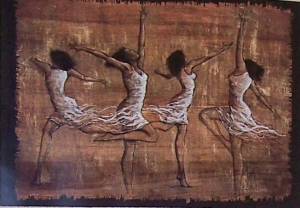
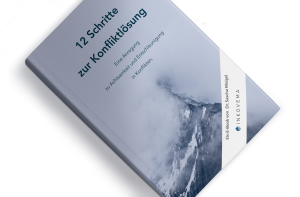
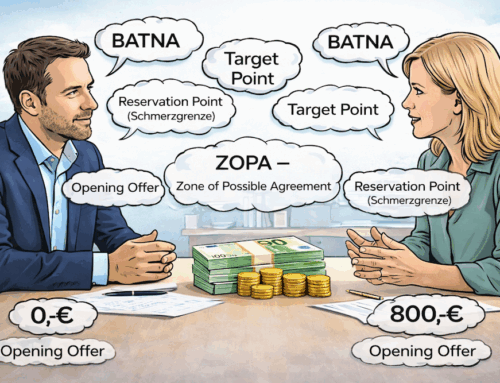
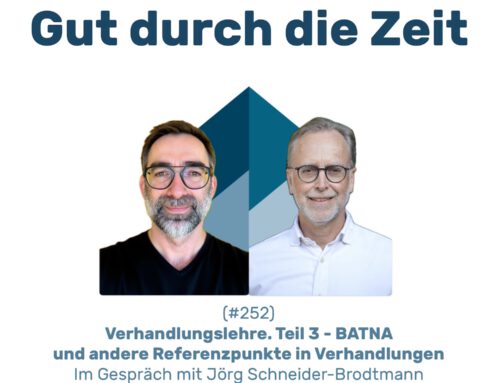
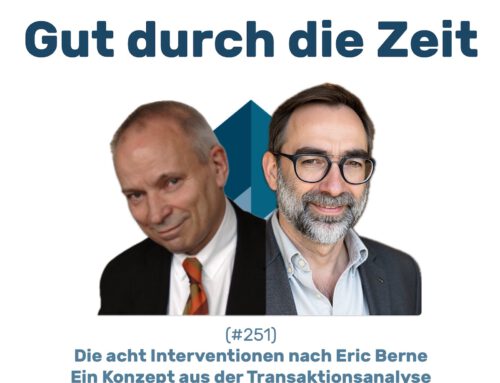
Dear Sascha Weigel,
When I read the article on your blog about the enfant terrible of the German-speaking mediation scene, Ed Watzke, who is sometimes more concerned with peace and emotions, I thought: "Well, what kind of bird is that, why don't you go and have a look?
After this lesson, I had written on at least 3 A4 pages of paper and marked many things with exclamation marks. I was so happy that someone was there to explain what I had known for a long time.
In your block you write "In any case, Watzke later expanded his approach into the "metaphor bridge". This is a holistic, situational approach, which, however, appears to be customised to his person and personality. Adaptations do not appear to be possible without further ado."
Certainly not without further ado, but for all those people who have found a friendly, approachable, trusting, people-loving attitude for themselves. People who do not see mediation as a technique but rather as a certain attitude and are able to "read" people. The ability to listen still seems very important to me, because people tell everything (at least to me) and tell the truth. Even if it's hidden in supposedly spoken subordinate clauses.
So it seems to me that before we go into mediation, it would be helpful to work with ourselves on many levels.
After listening to your conversation with Ed Watzke, which I really enjoyed, I'm going through the rest of my day with a smile on my face.
Best regards
Ingrid Grecko
Thank you very much, Ingrid Grecko. That's great to read! Feel free to check back, we'll be posting news on mediation and conflict management every week. The easiest way to stay informed is to subscribe to our newsletter.
BG
Sascha Weigel